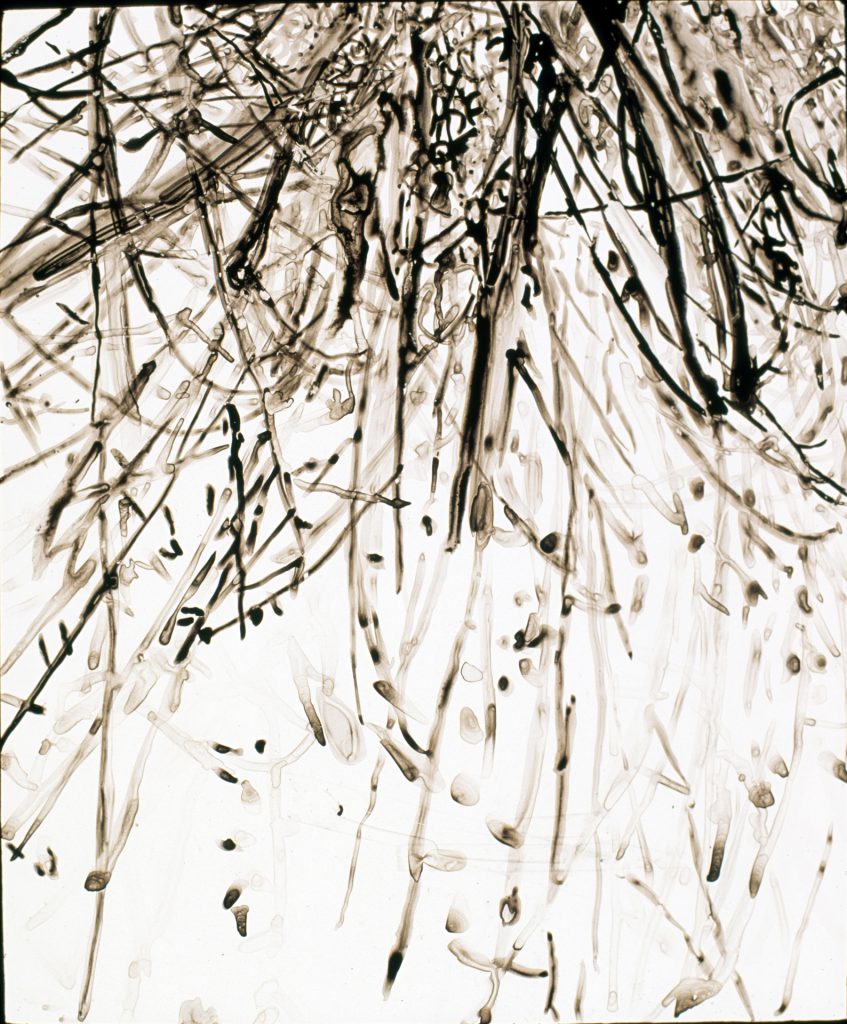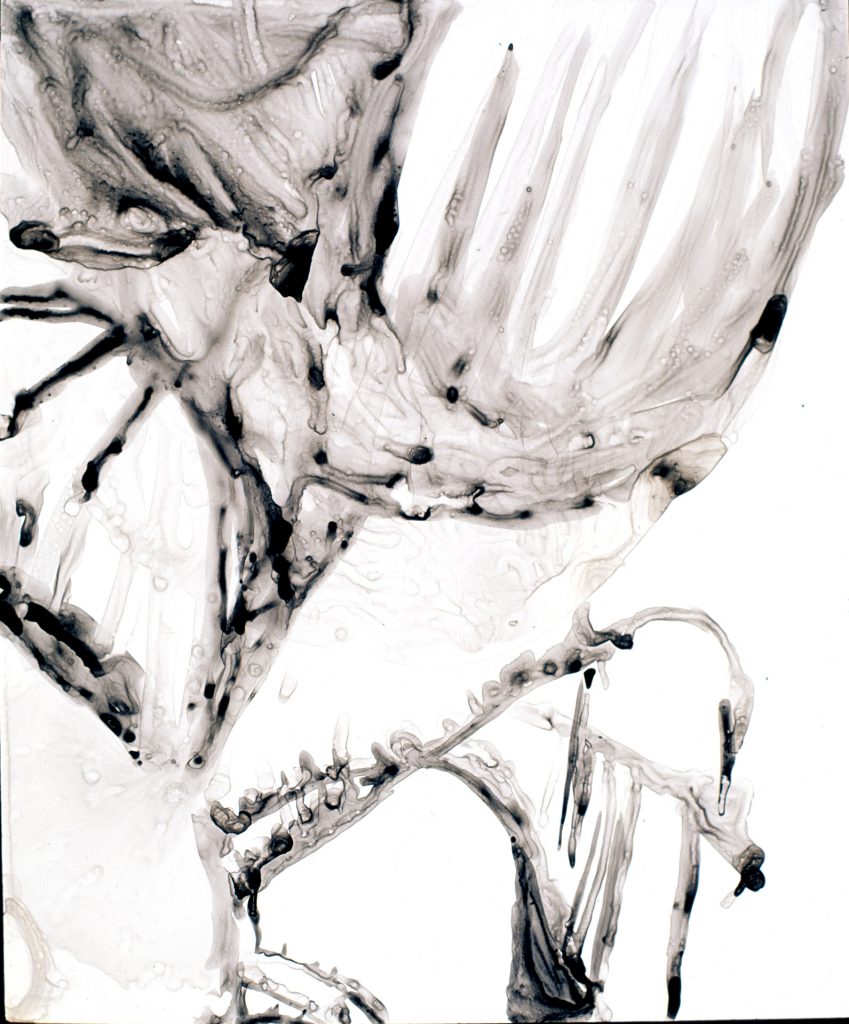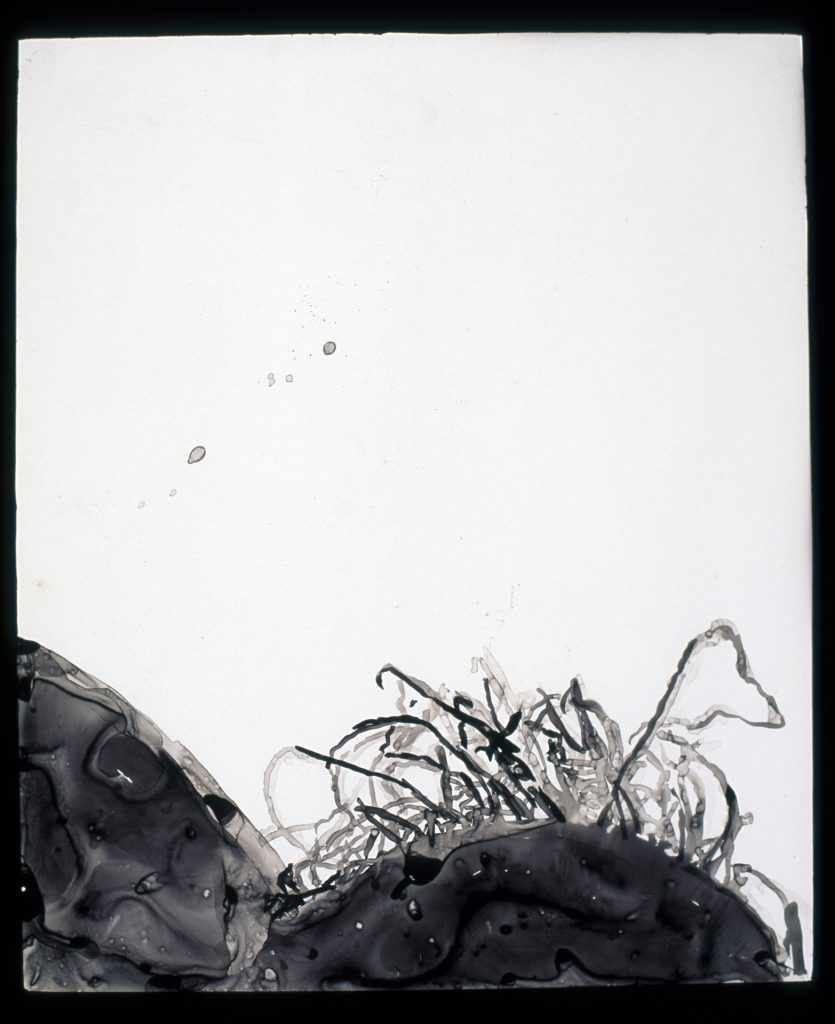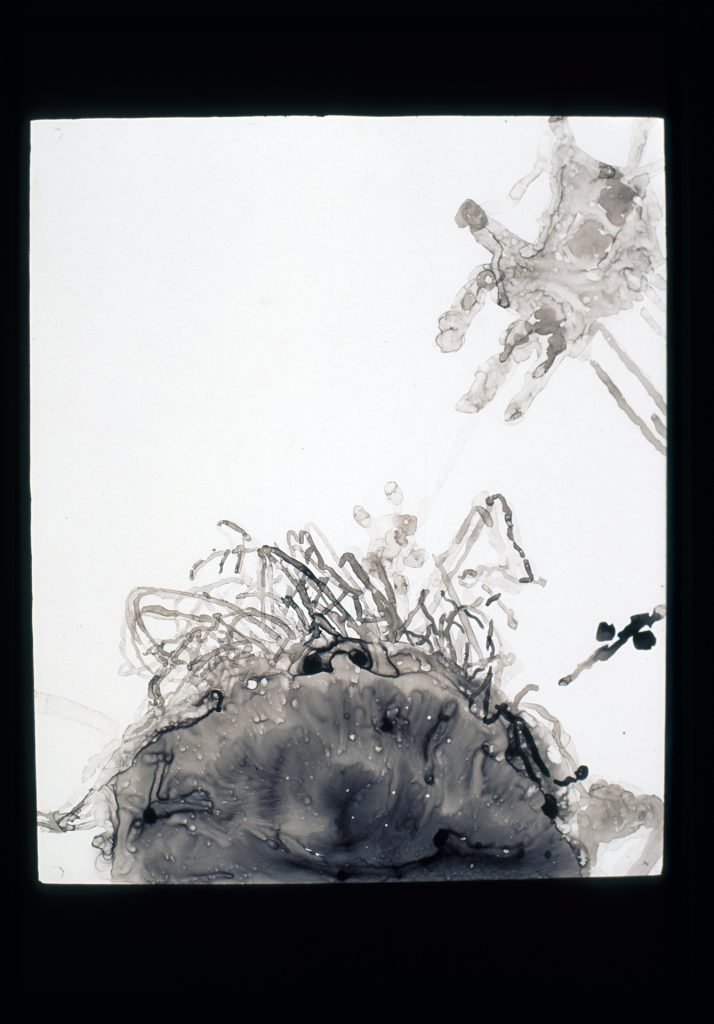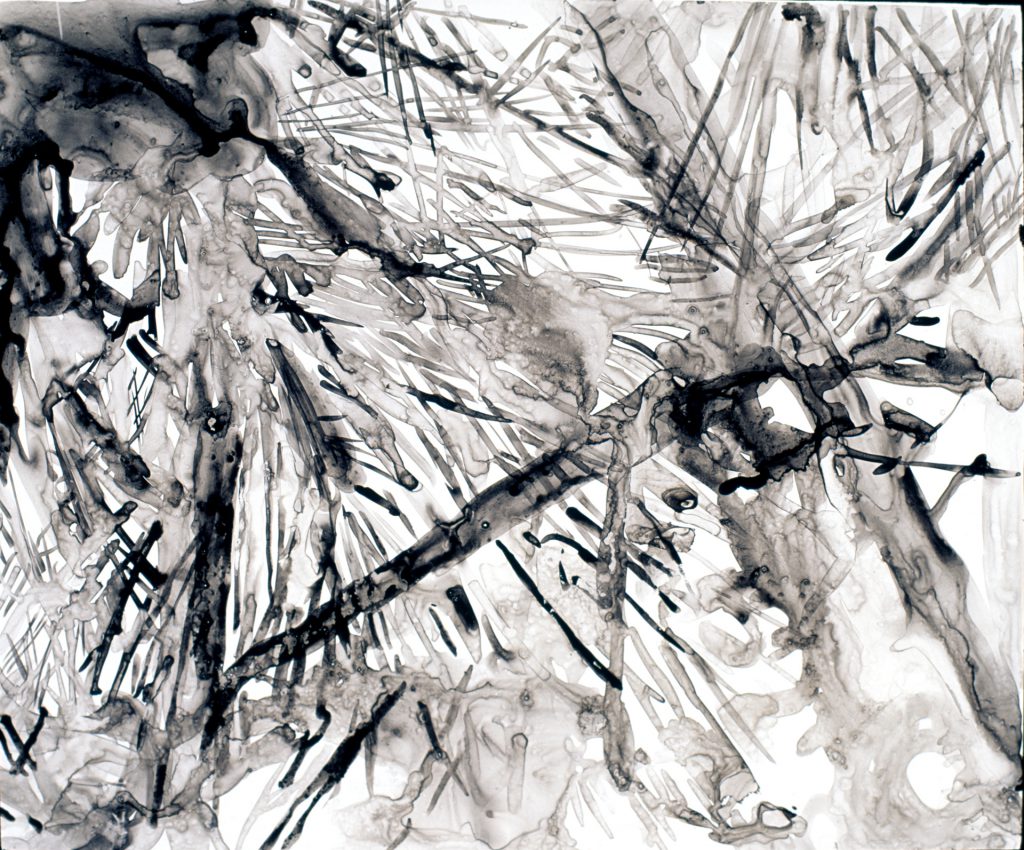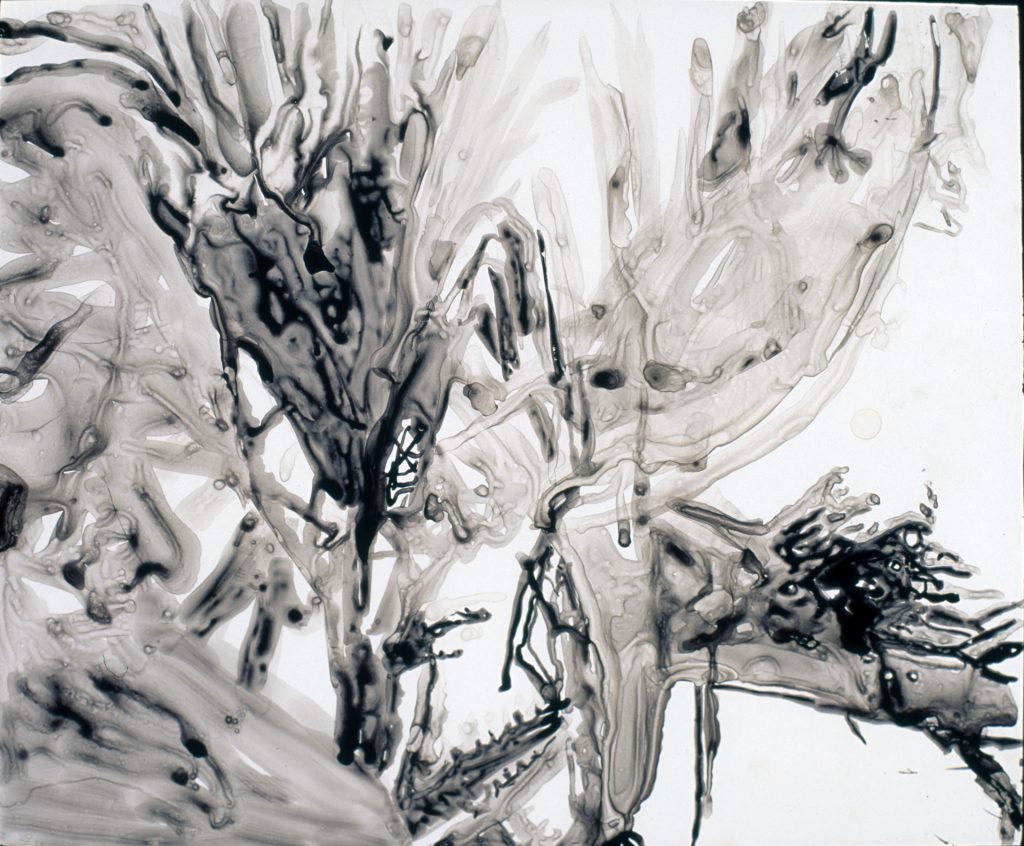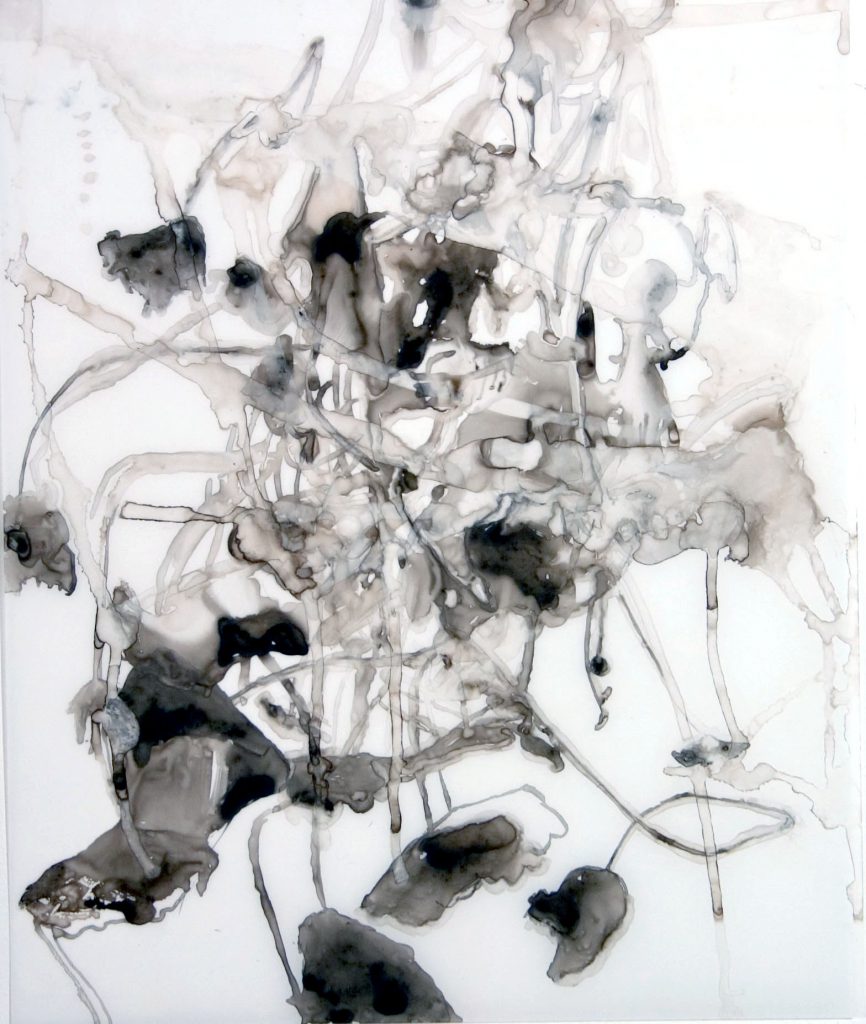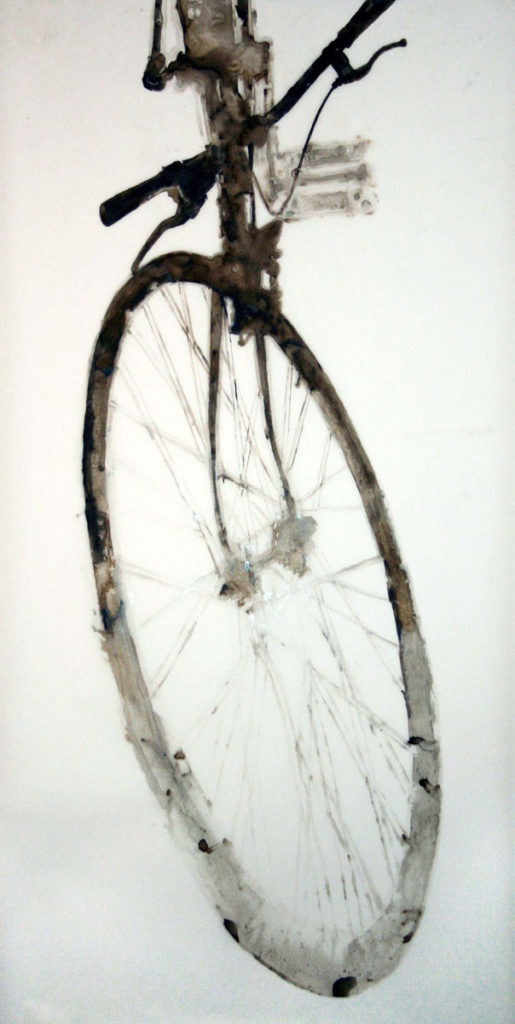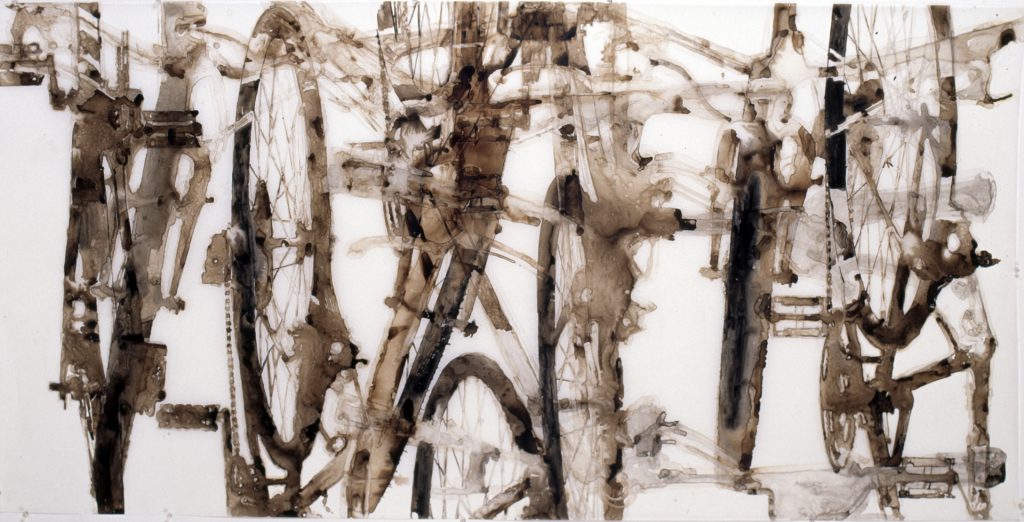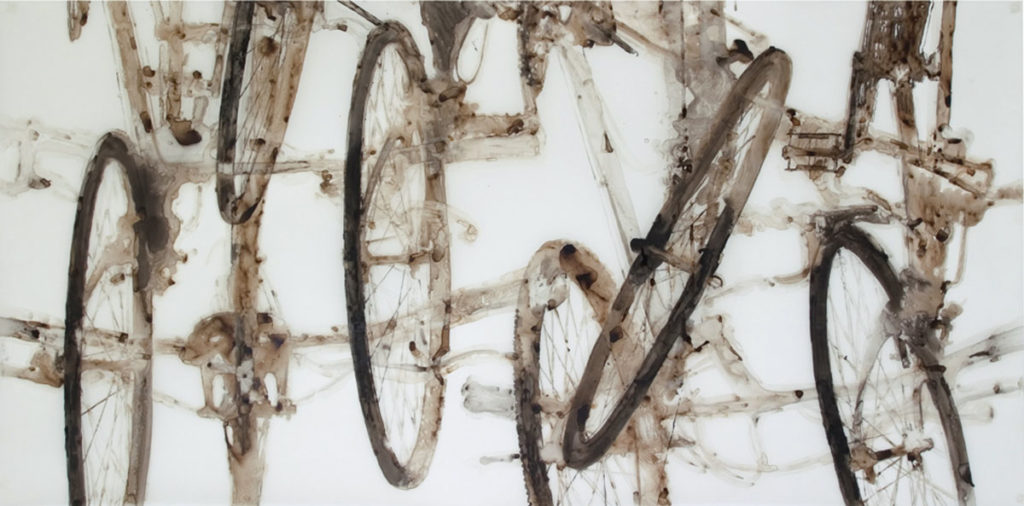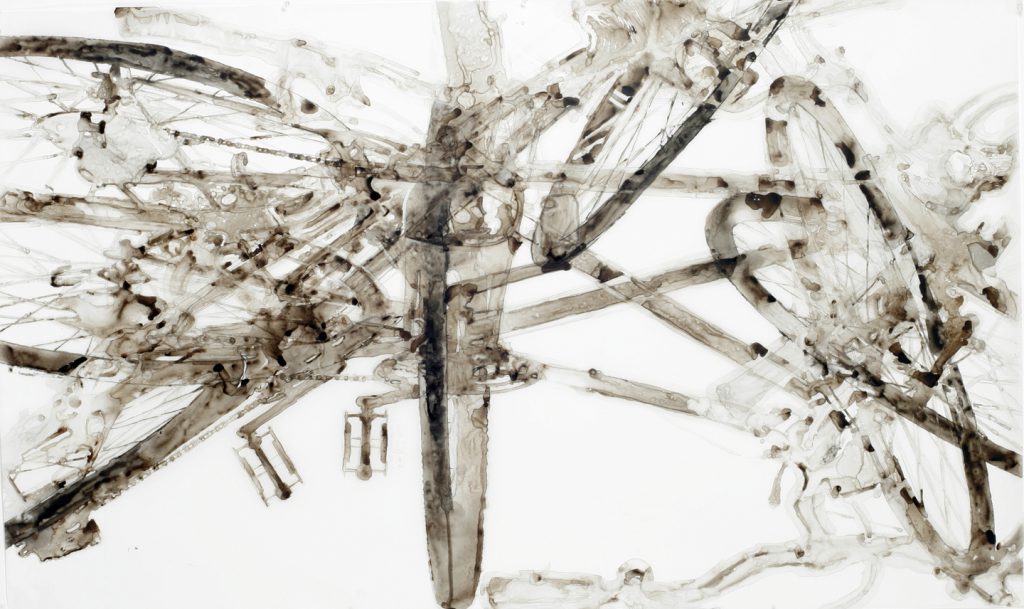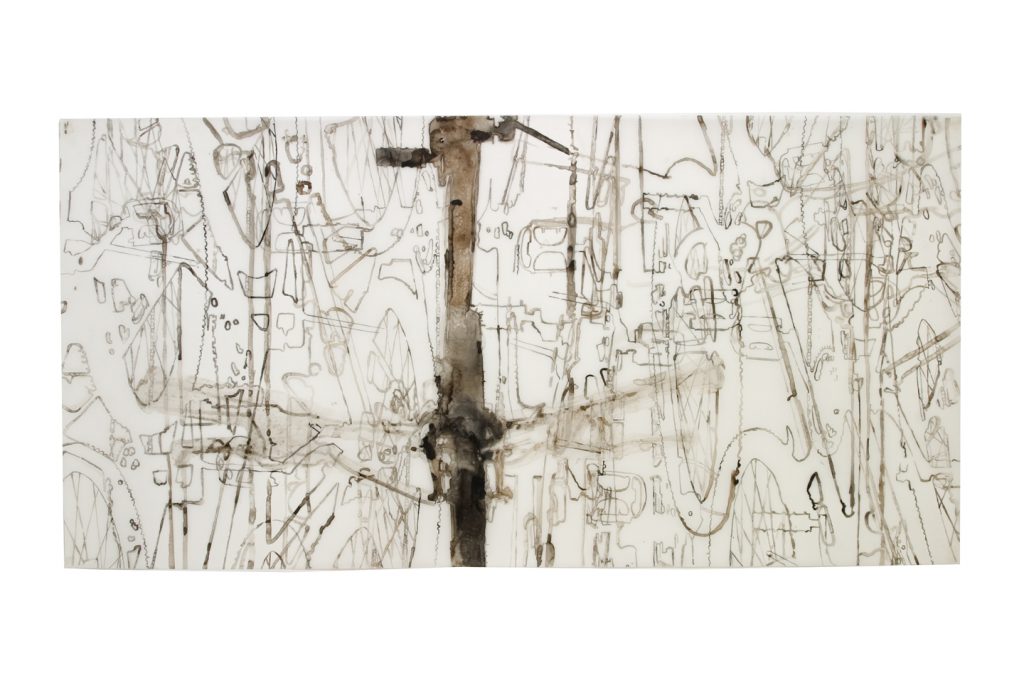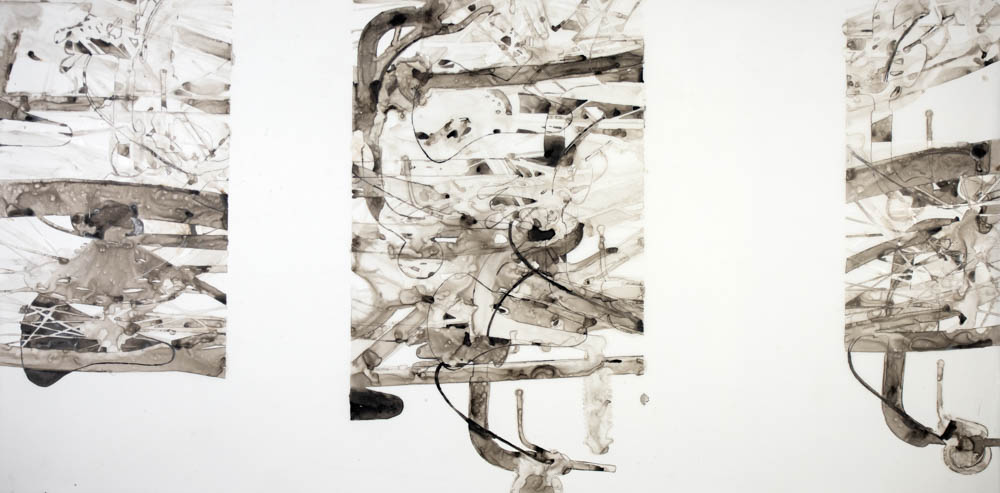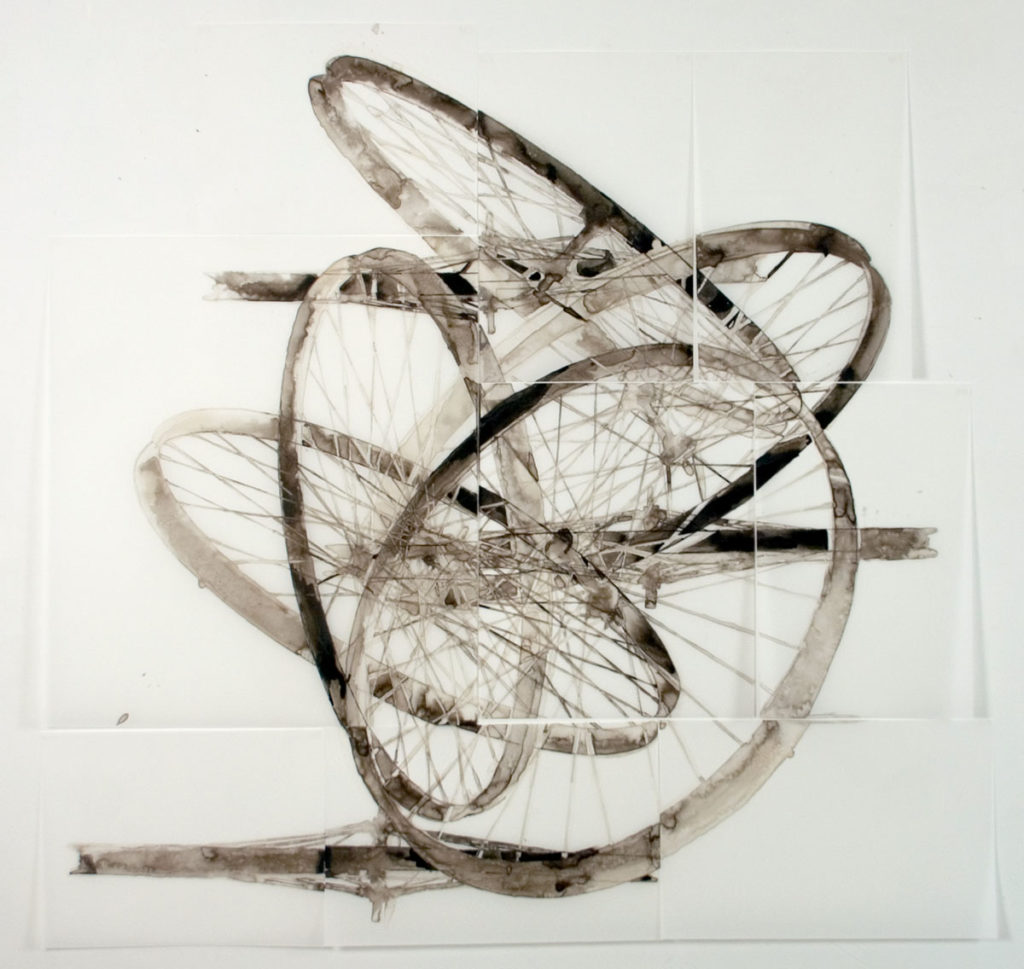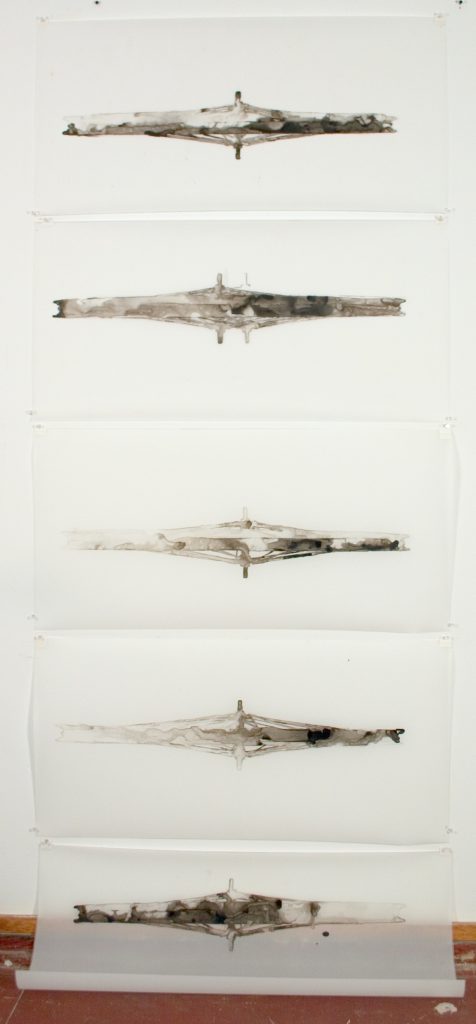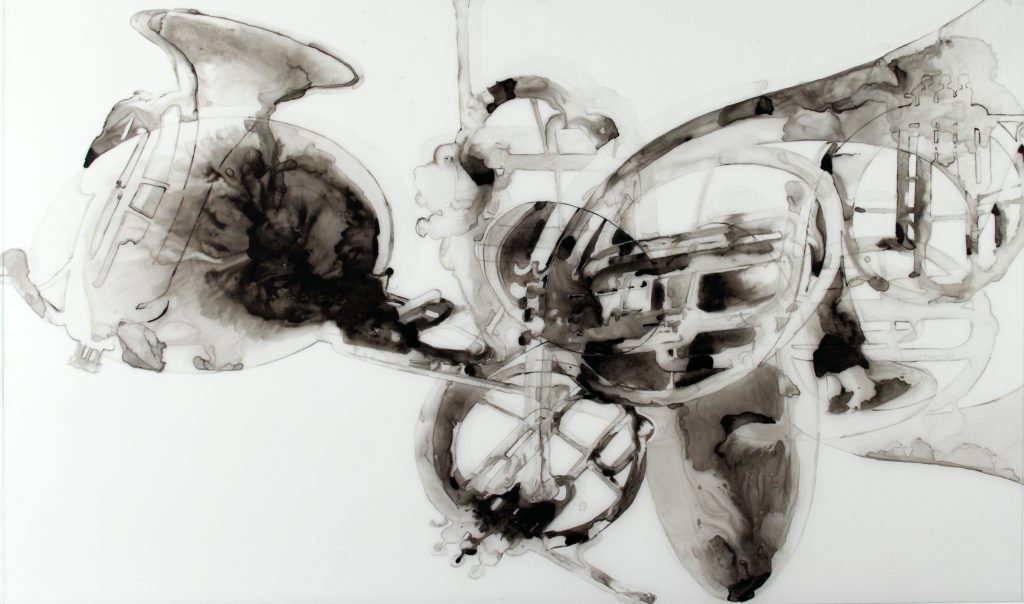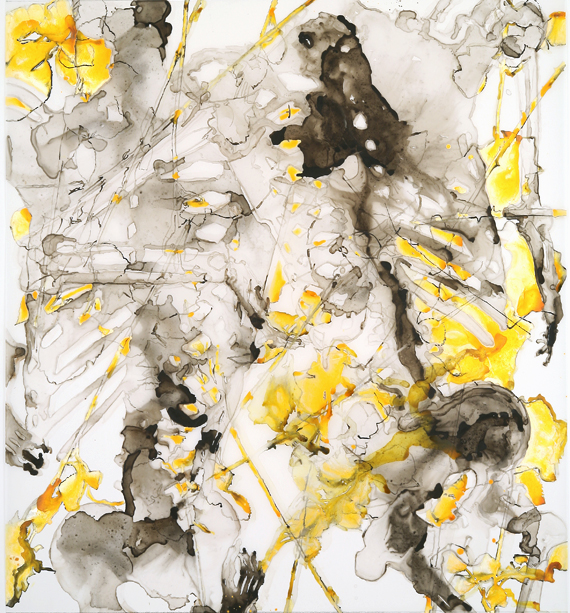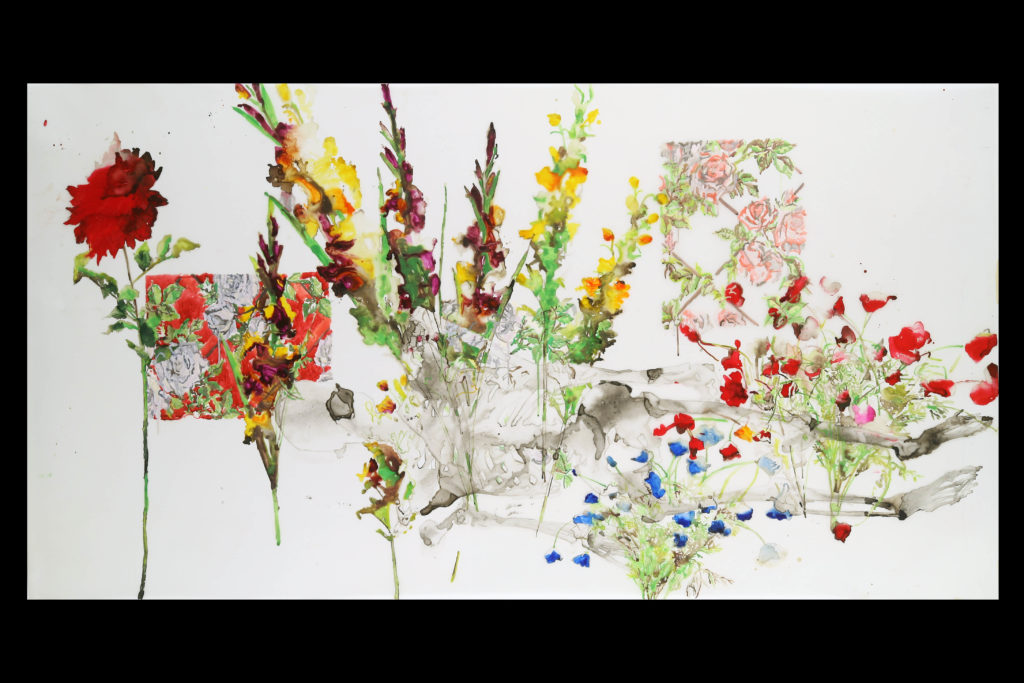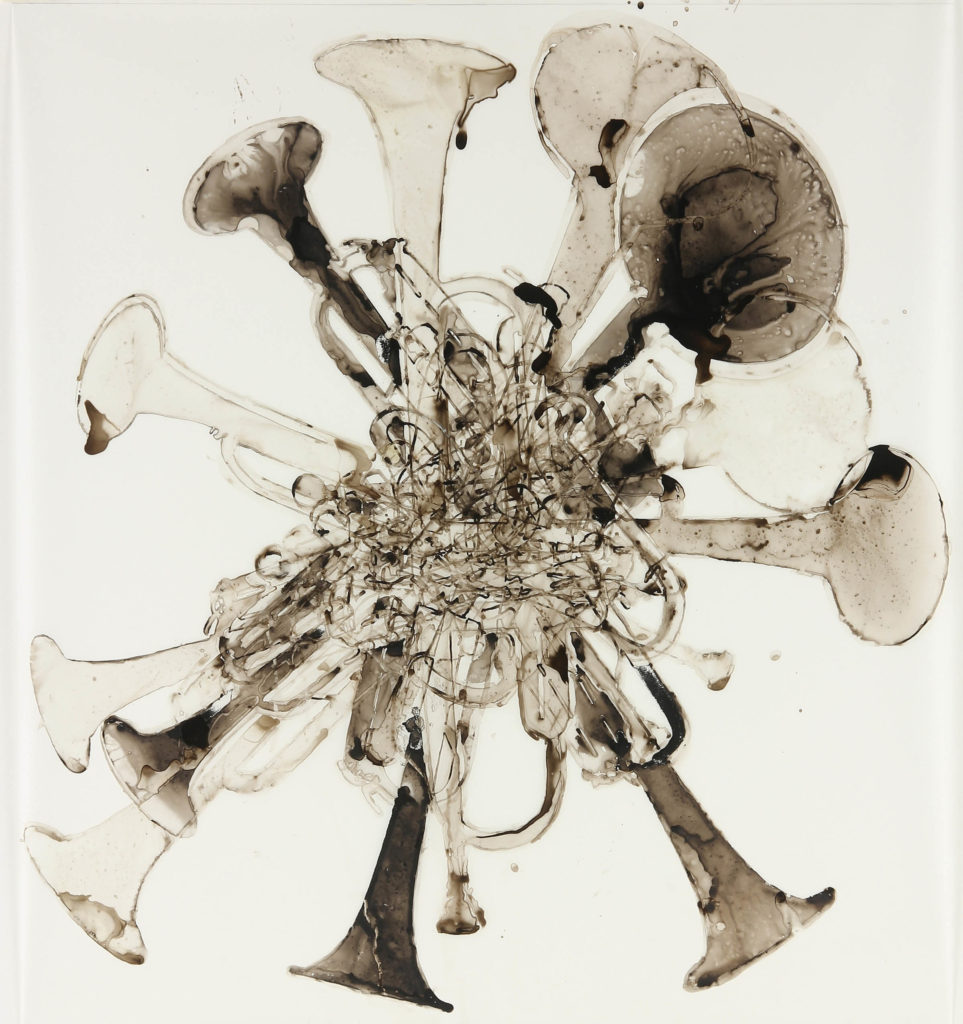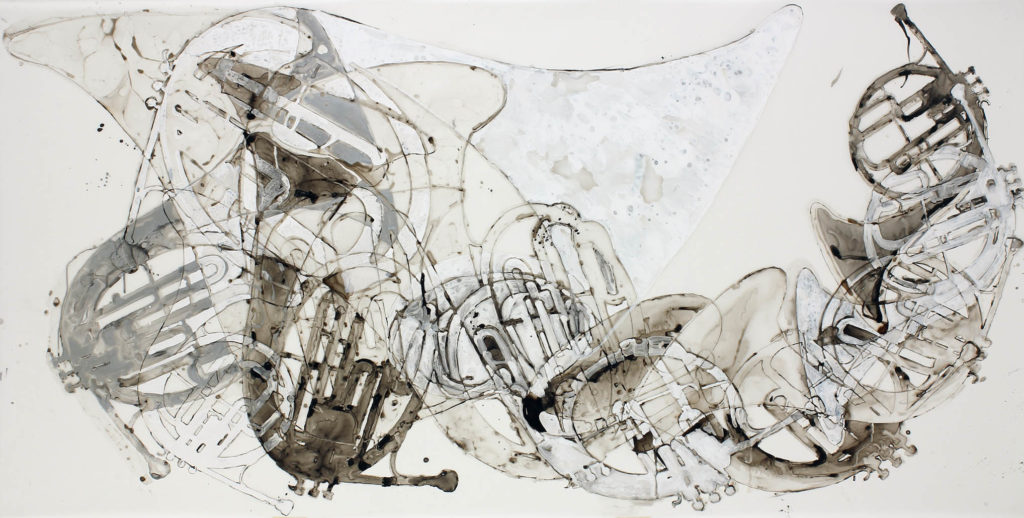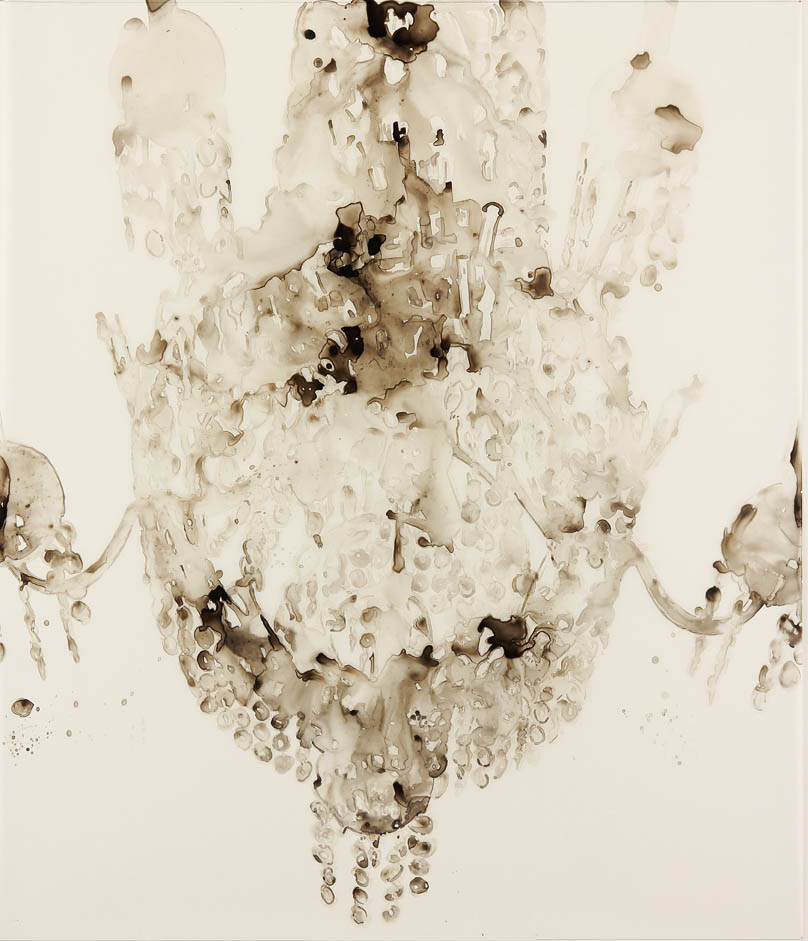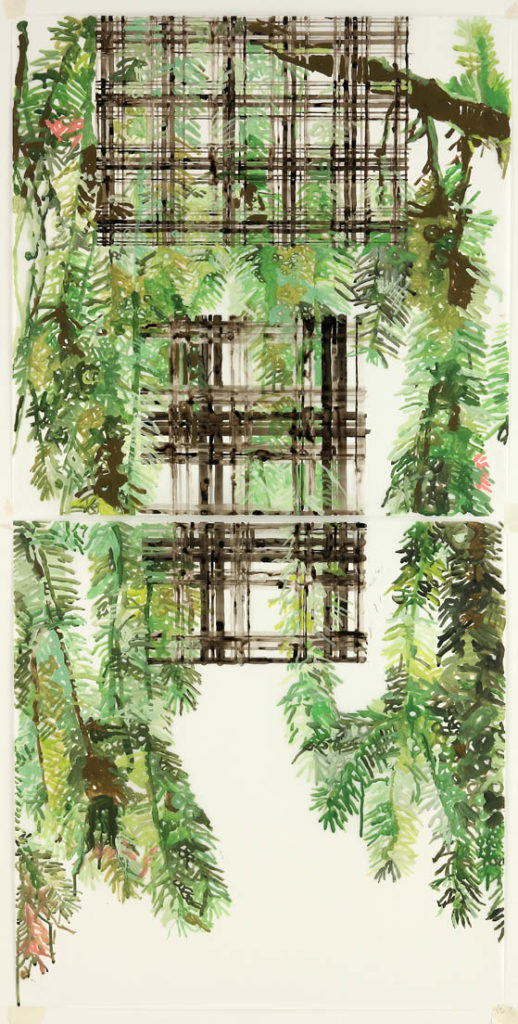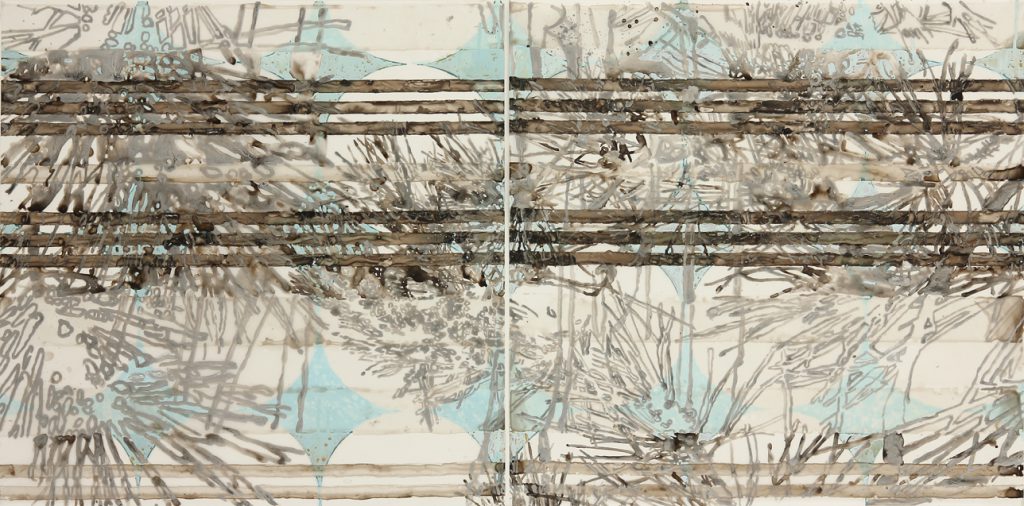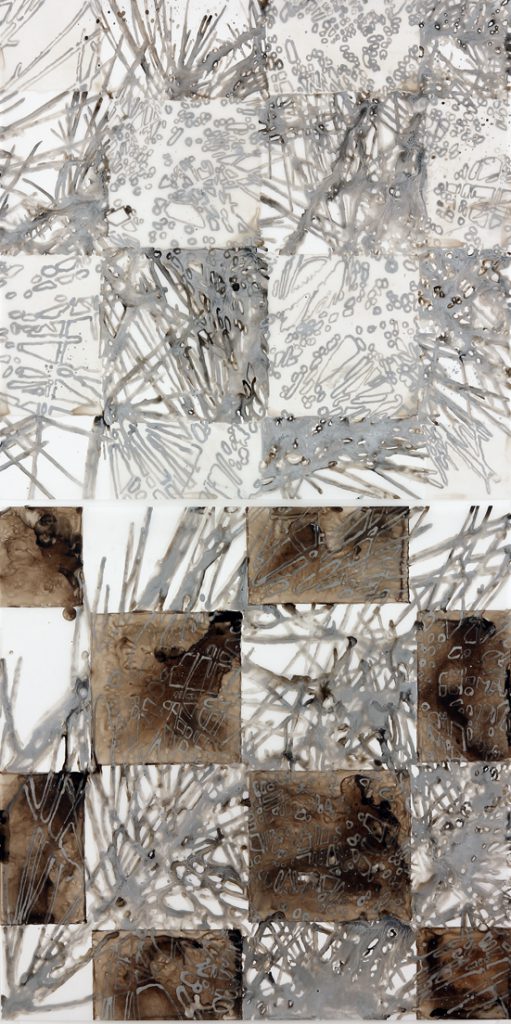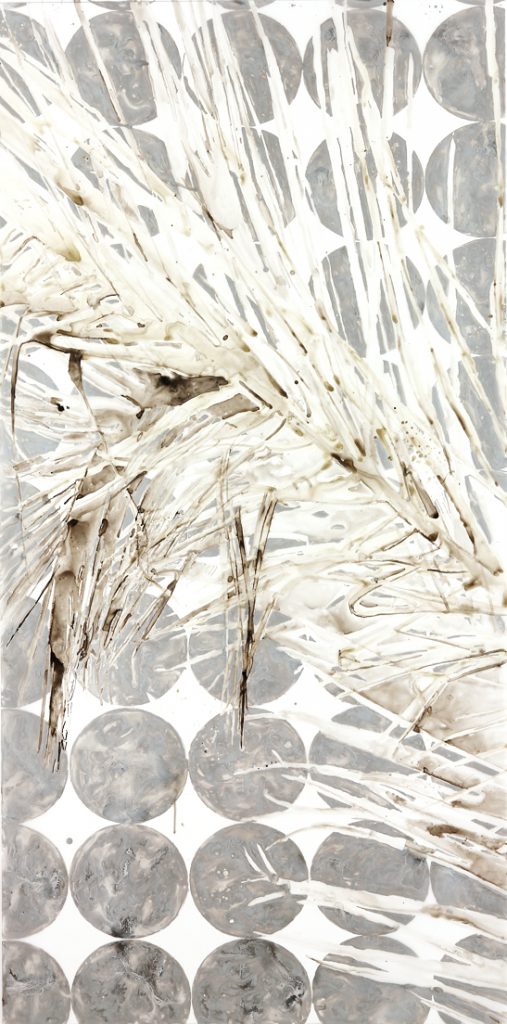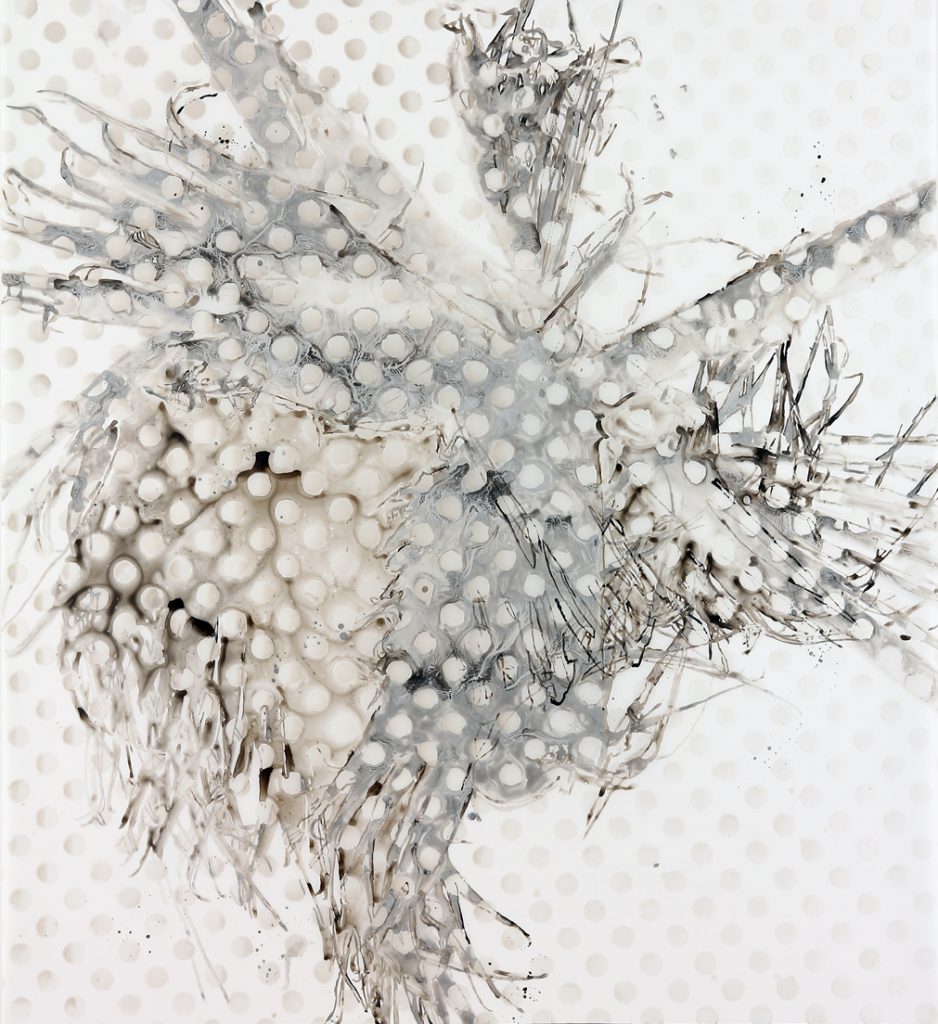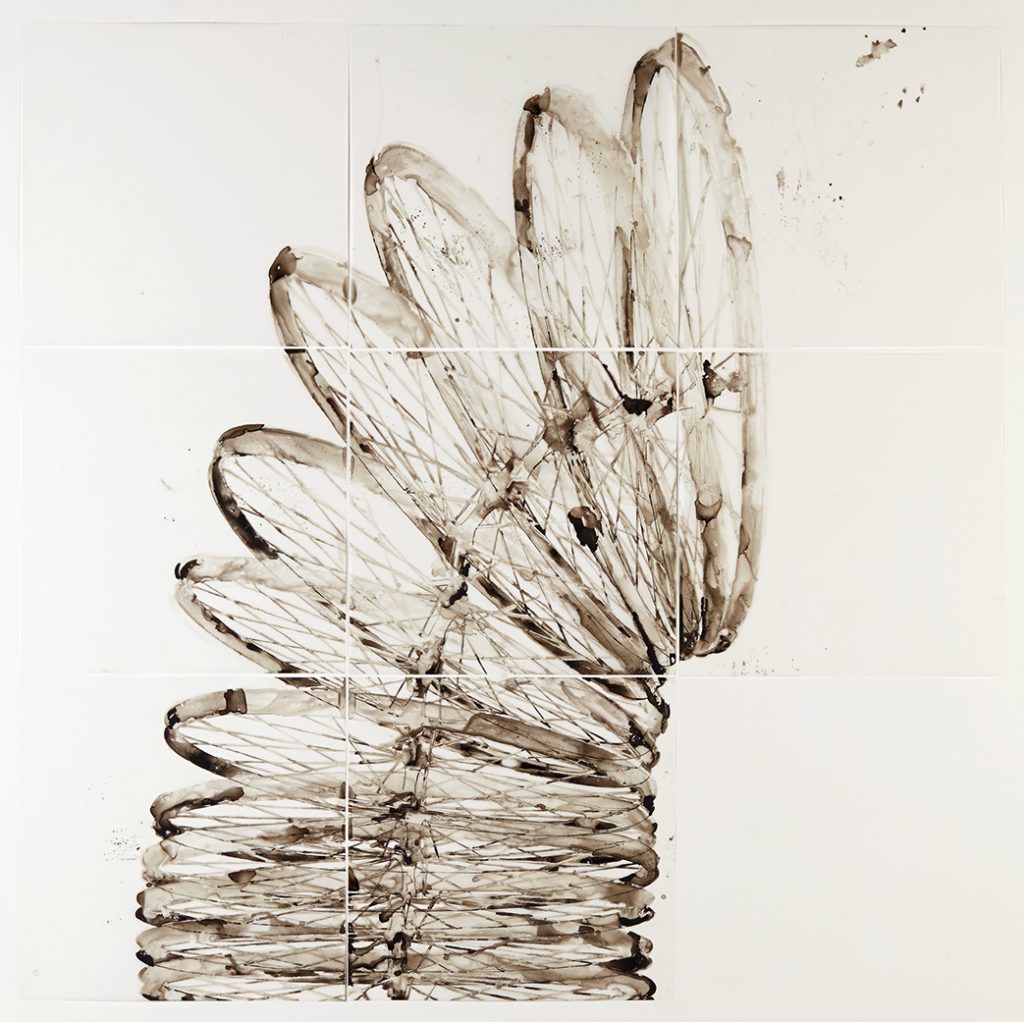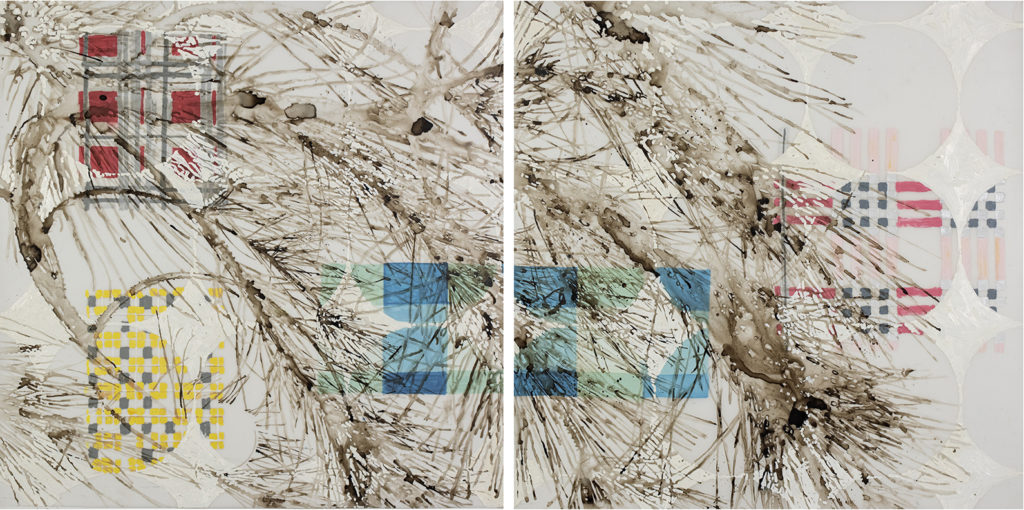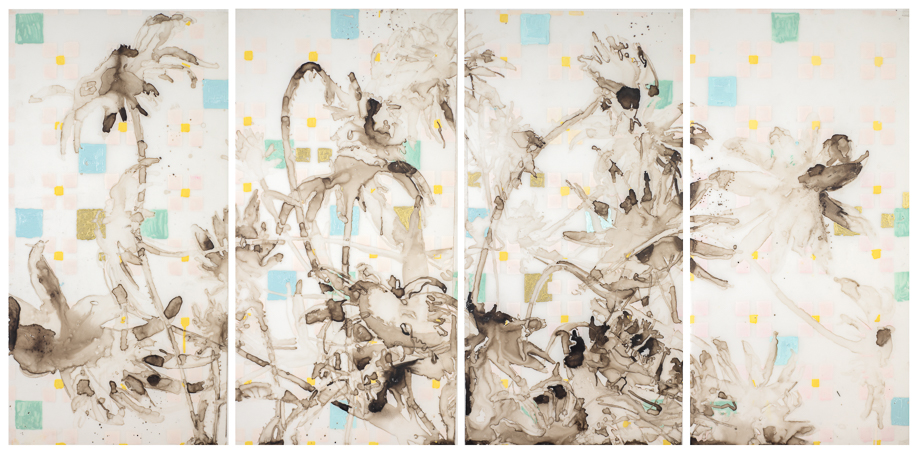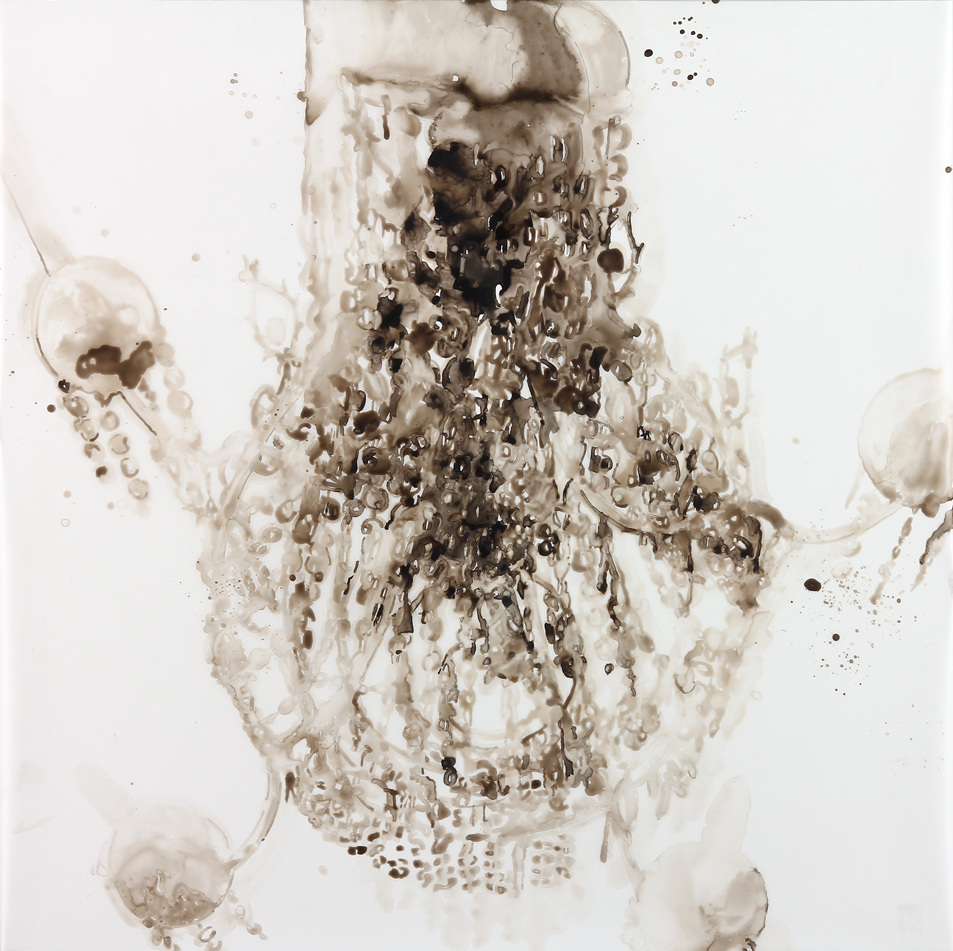
Shadows
This series came on the heels of a series of tiaras and the Evolution of Trust and Distrust (see “Words and Letters” in shows). Like most of my work, the making is a form of examination. Giving the elements shape and moving them around, I gain understanding of an experience that puzzles me.
I was a few years shy of 40 but looked younger. I was a college professor. I had several dozen shows under my belt. And I still experienced social friction around the fact that I look like a cupcake. I am pink and round and cute. But my psychic resume has a lot of razor blades. As a result, people, mostly men, approached me expecting cupcake and got razor blade. It wasn’t a satisfying experience for either of us.
The shadows started as a psychic resume in sculptural form. What would it be like if my experiences left a visible residue and I dragged them around behind me for all to see?
The idea was to make shadows tangible: flat rubbery forms that I could peel up from the ground and slap on the wall, sticky and abstract. I could make lots of theme—perhaps of passing cars, and pile them up like so many pancakes, fifteen feet across. Shadows seemed ideal byproducts of life, vital and mundane. Setting out to capture them, I instead found a strategy for drawing.
Read MoreAt the start I tried to draw in sunlight, but the shifting sun forced me to chase the forms across the page in skittering lines. Instead of capturing forms, I diagrammed fruitless human endeavor.
It wasn’t what I had meant to make—as is often the case in making—but I liked the thing and I liked the making.
Twenty-one years in, I am still using this process. I hang an evocative but common object from the studio ceiling, shine a light through it, and work the resulting shadow in ink and acrylic. Years of looking reveals forms that range from sharp to diffuse. In turn I modify materials to meet new visual criteria. I mix and evaporate inks to capture a range from crisp black to so light you can’t quite see it, just feel it there. These spaces are rendered in colorless medium which, because of its viscosity, pushes neighboring pigment into recesses, bleaching white in its path. In this way, materials take on a life of their own. Contour lines dry quickly and when filled, serve as channels, directing pools of ink to flow through the drawings. The pools bubble and dry leaving marks like geologic forms from evaporated lakes.
The source objects of these drawings are essential and meaningless. They have to be complex enough to exceed my skills, forcing me to pursue and invent.
There is an unexpected world in shadows. A form can be utterly familiar while completely unrecognizable. I choose objects that are intimate and figurative in nature: a horn, a bicycle, a wheel, a glass.
A shadow is an anti-iconic and distant cousin to its source object. Looking at the drawings, people sometimes respond from body memory. I watched a guy squeeze his hand looking at a handlebar brake shadow.
Taking the effect of the passing sun into the studio, I use repetition. One wheel drawn over the previous one fractures and erases what was before. This mimics how my mind manages new information. Every time I learn something new a previous truth gets edited or eliminated. Then all the little pieces need to shift around until I find new understanding of the larger picture. This kind of knowledge is not cumulative, as wheel upon wheel upon wheel becomes an intangible blur, not a comprehensive whole.
The nature and subject of my inquiry shifts with each new drawing. Many use the tone of shadows to examine the space between the intimate object (this is my glass, I hold it in my hand, I got it from my family, which holds experiences and relationships.) and the simple mundane object that is a glass.
Kenneth Baker said about my work, “She has piled up shadows…to create pictorial structures that wink with recognizable details but finally force the eye to surrender to their sheer graphic brilliance.”
Read Less